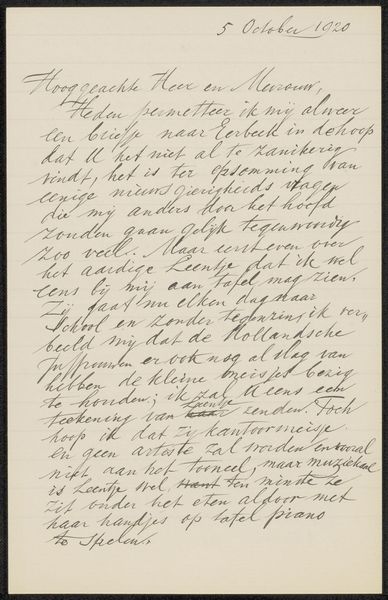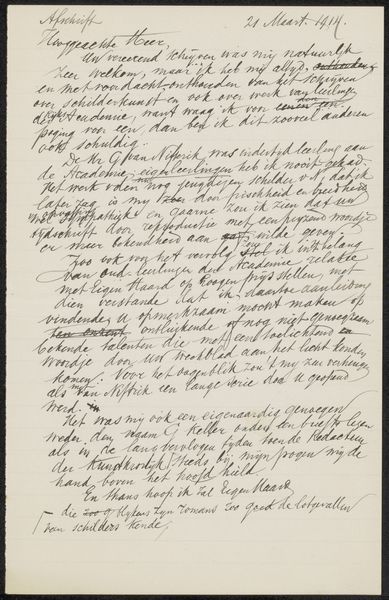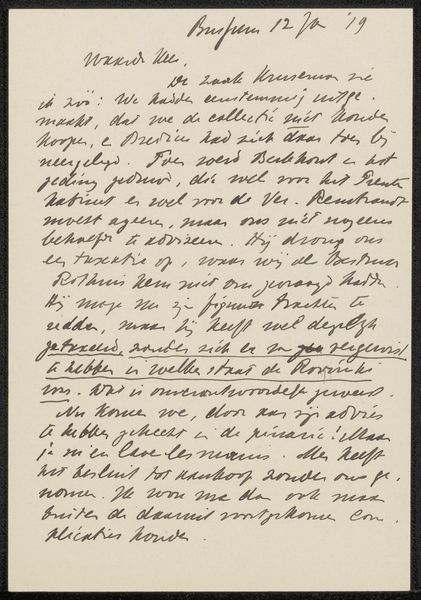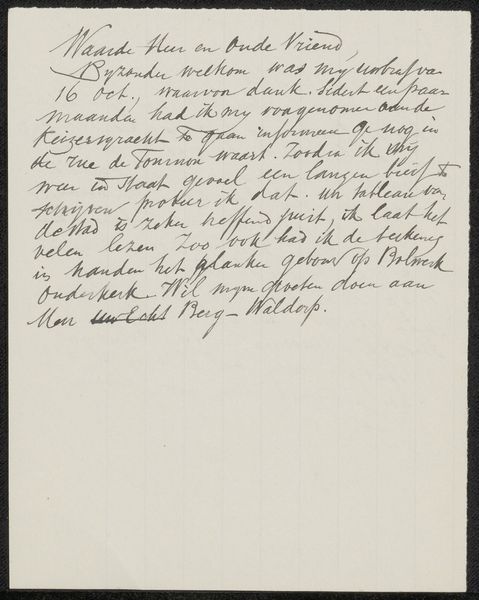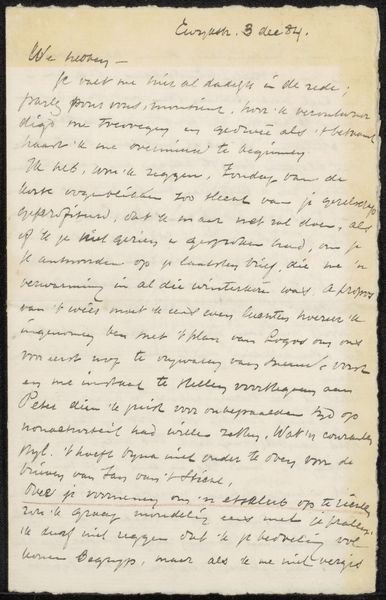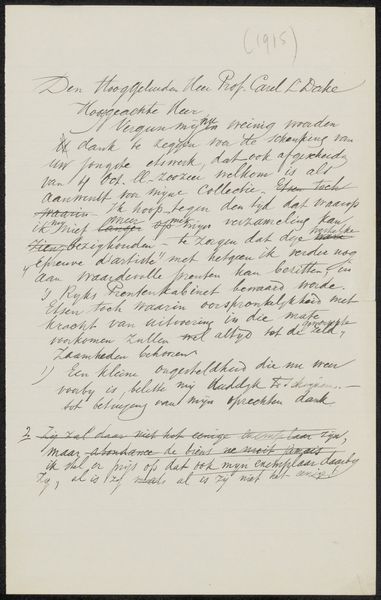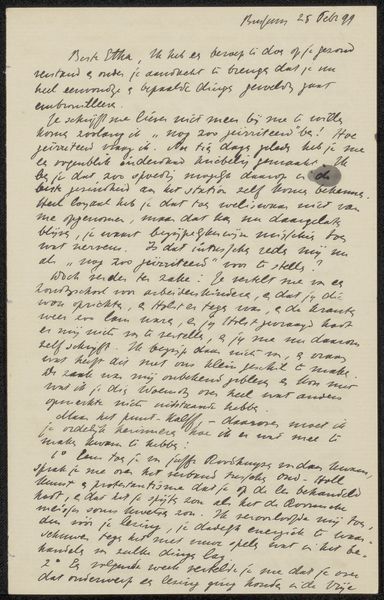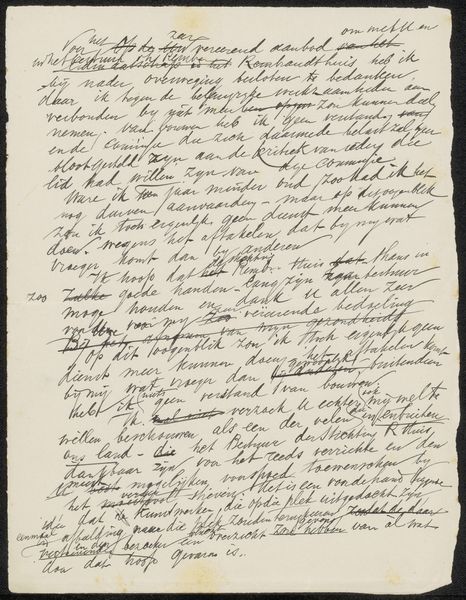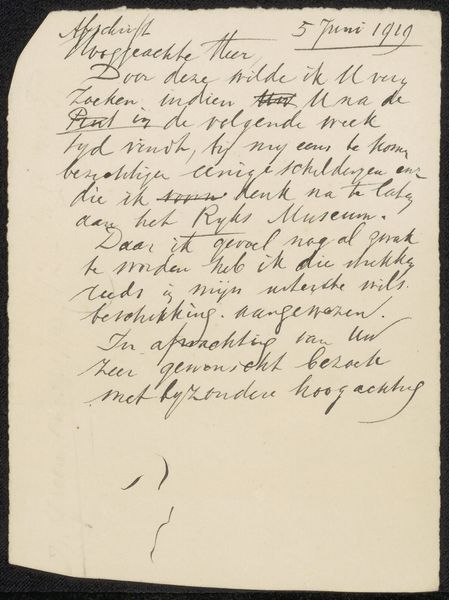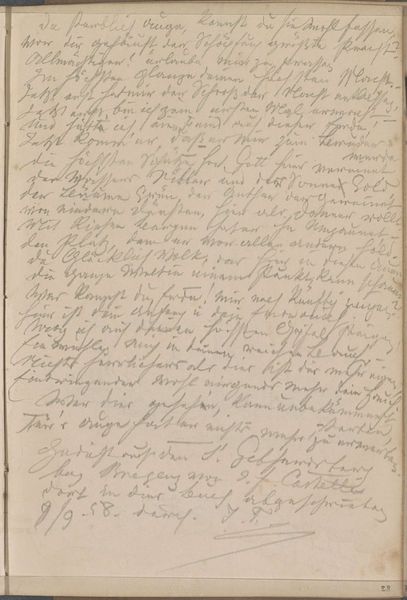
drawing, paper, ink, pen
#
drawing
#
hand-lettering
#
pen sketch
#
hand drawn type
#
paper
#
personal sketchbook
#
ink
#
hand-drawn typeface
#
ink drawing experimentation
#
pen-ink sketch
#
expressionism
#
pen work
#
sketchbook drawing
#
pen
#
sketchbook art
Copyright: Rijks Museum: Open Domain
Editor: This is "Brief aan anoniem," or "Letter to Anonymous," created in 1919 by August Allebé. It's an ink drawing on paper currently held at the Rijksmuseum. What strikes me is how intimate and personal the handwriting feels, yet it's addressed to someone unknown. What do you make of that contrast? Curator: Indeed, the tension between the public act of writing and the private nature of a letter to a nameless recipient is very compelling. This piece pulls us into a psychological space. The letter, rendered in a flowing, almost calligraphic hand, becomes a symbol in itself, a vessel of untold emotions and perhaps unrequited thoughts. What emotions do you think are conveyed in the letter? Editor: Maybe a mix of vulnerability and perhaps a bit of yearning, considering the Expressionist style. I can imagine it like a passage out of someone’s personal sketchbook, as if documenting and sharing thoughts was essential to them, or were even seeking understanding through connection with a stranger. Curator: The use of a hand-drawn typeface contributes to the authenticity and intimate experience we have as a viewer, offering an unfiltered peek into a bygone era. Moreover, anonymous correspondence held a different weight then. One may read the "anonymous" receiver, from our modern perspective, as simply any or every receiver, so perhaps it represents communication at large. This symbol of private thought speaks to shared feelings of a moment. Do you think its historical context gives further meaning to this visual composition? Editor: That makes sense, I’m not so sure I had thought of that initially. The combination of handwritten text with that type of presentation and styling feels quite potent. This helps the visual components and symbols of an item that seem "old" continue to retain meaning and memory within cultural artifacts, but with that layer of distance for a historical read of those themes. Curator: Exactly, so we both got more than just aesthetic appreciation, understanding an intimate letter transformed into shared visual representation!
Comments
No comments
Be the first to comment and join the conversation on the ultimate creative platform.
